Space Systems Research Center (SSRC)
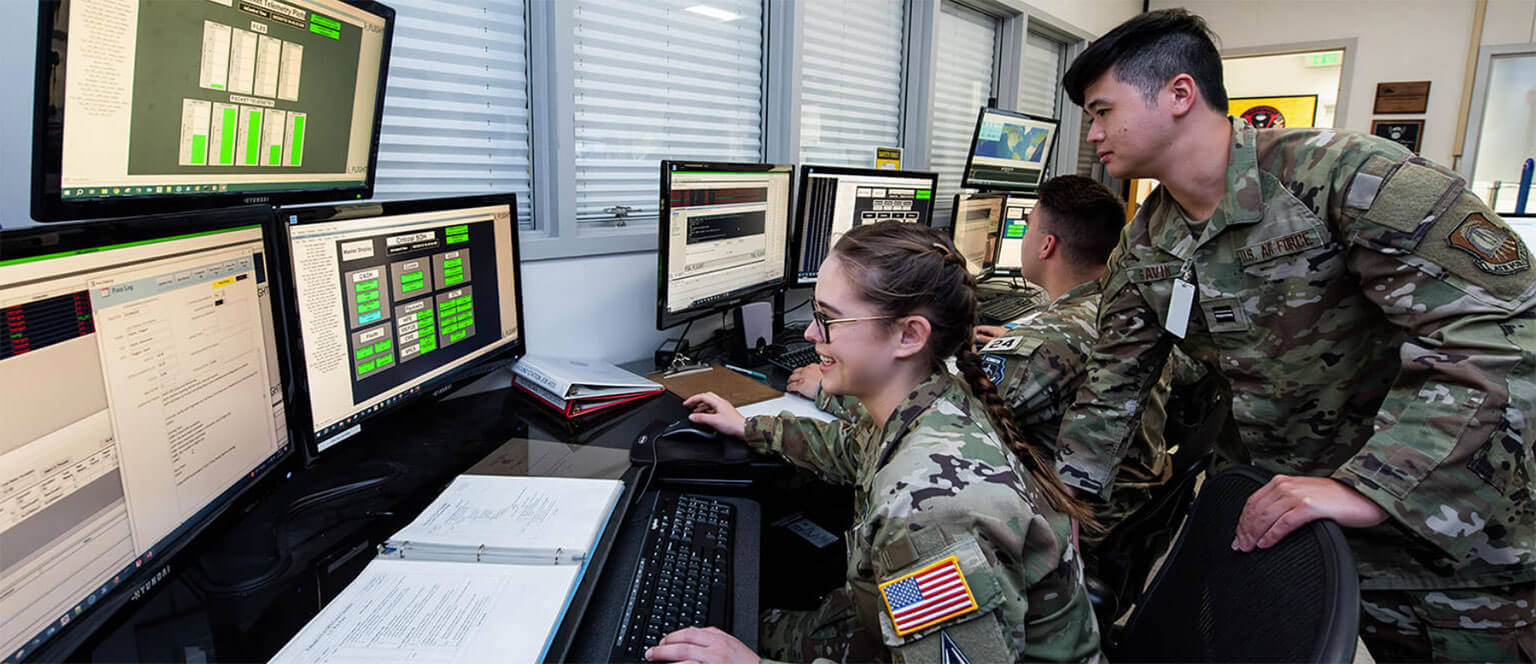
The Space Systems Research Center designs, builds, tests, and flies cadet-built, DOD-backed satellites.
It focuses on cadet education while achieving real DOD objectives and supports national Science, Technology, Engineering and Mathematics (STEM) educational objectives.
Core Competencies
- Designing, building, testing and flying small spacecraft
- Systems engineering
- Avionics testing and simulation
Major Projects
- FalconSAT-Xtra
- FalconSAT-X
- FalconSAT-6
- Cadet Space Operations Squadron
FalconSAT History
The Beginning
The initial concept for what became the FalconSAT program began in June 1991 during the American Society of Engineering Education Symposium in New Orleans. Brig Gen Bob Giffen, at the time a Colonel and Head of the Department of Astronautics, and Lt Col Randy Liefer met with Professor Bob Twiggs from Weber State College (now University) which had successfully demonstrated that universities could develop satellites with the successful launch of Weber State Satellite (WEBERSAT).
Mr. Emery Reeves, a retired TRW engineering Vice President, joined the Astro Department in 1993 as a visiting professor to lead the satellite design and development program. Additionally, the Emerson Electric Company funded the General Bernard Schriever endowed chair in 1994, initially filled by Professor Gil Moore from Utah State University.
The Astro Department established the Space Systems Research Center (SSRC) to facilitate satellite design, build, testing, and operations.
Present Day
The SSRC is the home of the FalconSAT program, which provides cadets with the opportunity to “learn space by doing space.”
Cadets in the Astro Engineering capstone course, which includes participants from multiple majors, build and test satellites that host technology demonstration experiments for the Department of Defense. Additionally, members of the Cadet Space Operations Squadron (CSOPS) provide daily operations for the on-orbit FalconSATs. CSOPS provides its members, which include cadets from all academic years and majors, with exposure to real-world satellite operations.
High Altitude Balloons
USAFASAT-B (1995)
Mr. Reeves and Professor Moore led the Academy’s first spacecraft prototype, USAFASAT-B, in the Spring of 1995. USAFASAT-B’s maiden flight occurred on May 21, 1995, reaching 110,000 feet and marking a critical first step in the Academy’s small satellite program. USAFASAT-B’s altitude and coordinates were measured using a GPS receiver and transmitted back to the Academy’s control center in Fairchild Hall. The eight-hour flight demonstrated command and control capability from the U.S. Air Force Academy ground station as well as several avionics systems, including the ability to orient solar panels towards the sun. The flight demonstrated the viability of building and operating spacecraft at the Academy.
Glacier (1996)
Glacier was a high-altitude balloon that launched on March 17, 1996, and included a GPS receiver and magnetometer experiments. It provided tracking and telemetry data to the
U.S. Air Force Academy ground station.
FalconGOLD (1997)
FalconGOLD was the first satellite designed and built at the Academy. The mission was a partnership between the Academy and the University of Colorado, Colorado Springs (UCCS). Cadets were responsible for building the spacecraft while students at UCCS designed the ground station. The name FalconGOLD pays tributes to both schools by including the U.S. Air Force Academy mascot and one of UCCS’ school colors.
FalconGOLD launched in October 1997 as a secondary experiment that launched with a DSCS satellite. FalconGOLD remained attached to the upper stage of the Atlas Centaur and remained in a Geostationary transfer orbit (GTO) which allowed the spacecraft to collect GPS signals above the altitude of the GPS constellation. The satellite included a nickel metal hydride battery pack for electrical power and had an expected 15–20-day lifespan. It also utilized a UHF radio to communicate with the ground. GPS data was collected with a 2” patch antenna. The FalconGOLD mission was the first time a spacecraft received GPS C/A code above the altitude of the GPS constellation.
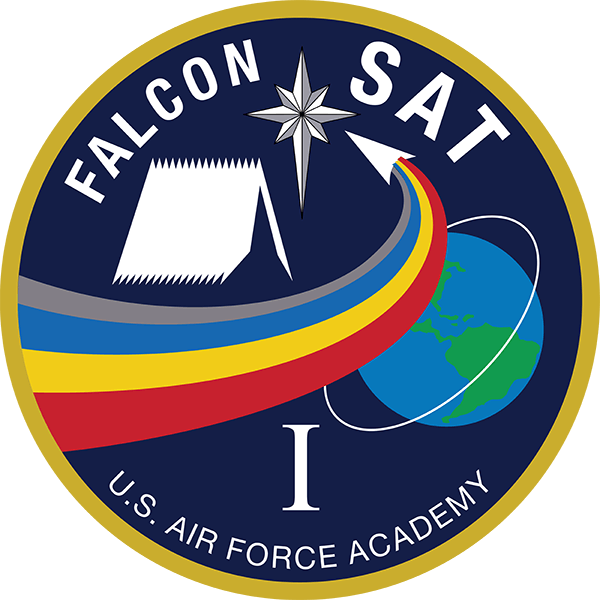
FalconSAT-1 launched on January 27, 2000, on the first Minotaur launch vehicle out of Vandenberg Air Force Base. It hosted the Charging Hazards and Wake Studies – Long Duration experiment, designed and built by cadets and faculty in the Physics Department. Its purpose was to determine the effects of spacecraft charging in low-earth orbit over a period of at least six months. The spacecraft experienced a power system anomaly soon after deployment and the mission was declared a loss after one month. While considered a technical failure, the mission was a resounding academic success. Cadets designed and built all aspects of FalconSAT-1, developed ops plans, and supported the launch campaign. The experience with FalconSAT-1 led to the decision to focus cadets on integrating subsystem designs as opposed to design.
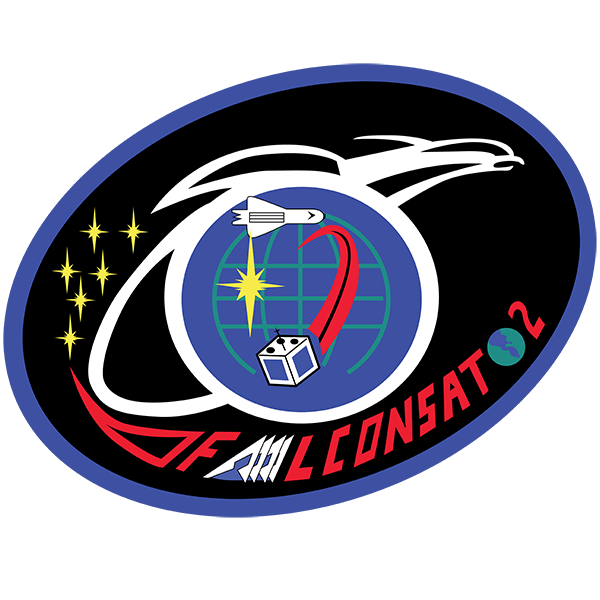
FalconSAT-2 was originally scheduled to launch aboard the Space Shuttle Atlantis in 2003 but lost its ride to space after the space shuttle Columbia tragedy in February of that year. The fully assembled satellite remained in the Air Force Academy clean room for over two years before being offered a launch opportunity on the maiden voyage of the Space-X Falcon-1 rocket. The rocket exploded shortly after lift-off and FalconSAT-2 was unceremoniously ejected from the payload fairing, landing in a machine shop supporting the launch on Kwajalein Atoll. The satellite was shipped back to the Air Force Academy where it is still displayed in the Astronautics Museum.
FalconSAT-2 hosted the Micro-Electro Static Analyzer (MESA) experiment, designed and built by cadets and faculty from the Physics Department. MESA was intended to detect and characterize plasma bubbles in the ionosphere that could interfere with GPS and other military communication signals.
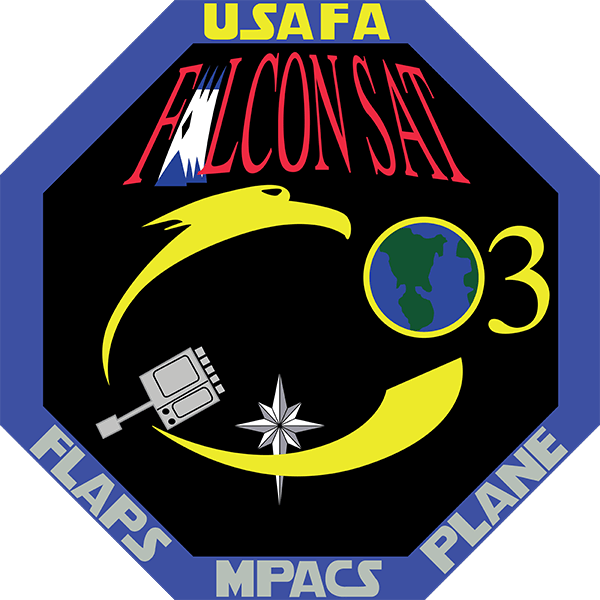
FalconSAT-3 launched on March 8, 2007, as part of the STP-1 mission flown out of Kennedy Space Center, FL. The Cadet Space Operations Squadron (CSOPS) executed command and control of the spacecraft from the Academy’s satellite operations center for a few years, after which command and control was transferred to Air Force Space Command as part of the Undergraduate Space Training curriculum. FalconSAT-3 was not actively managed after 2017, but licensed HAM radio operators were still able to communicate with it until the spacecraft de-orbited in January 2023, culminating in more than 15 years of on-orbit activity.
FalconSAT-3 leveraged a gravity gradient boom to provide attitude stabilization for the first time in the history of the program. The satellite hosted three experiments ranked by the Department of Defense Space Experiments Review Board. MPACS was an on-orbit demonstration of a miniature pulsed-plasma thruster for the purpose of attitude control. The Plasma Local Anomalous Noise Environment (PLANE) payload was a plasma sensor developed in the Space and Atmospheric Research Center (SPARC). PLANE measured boundary layer effects on plasma in proximity to a spacecraft. The Flat Plasma Spectrometer (FLAPS) characterized plasma disturbances in the ionospheric background.
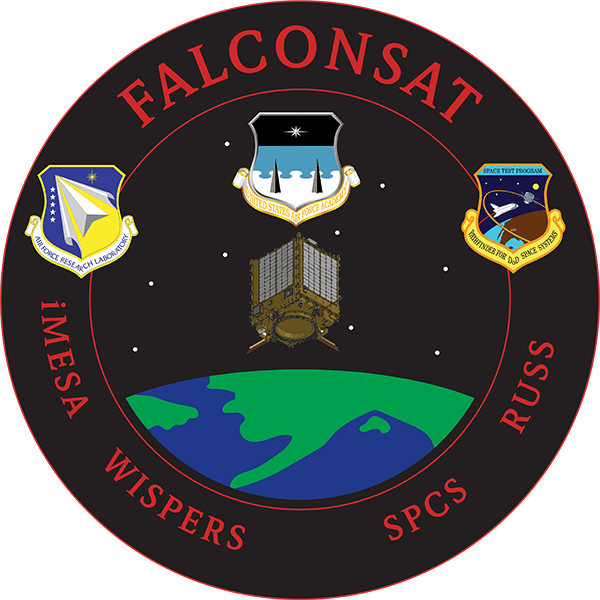
FalconSAT-5 launched on November 19, 2010, on a Minotaur IV launch vehicle as part of the STP-S26 mission out of Kodiak Launch Complex, AK. The satellite hosted three experiments. The primary payload was the Space Plasma Characterization Source (SPCS), a combined Hall Effect and cold gas thruster. Additional experiments included Wafer Integrated Spectrometers (WISPERS), which measured and detected the presence of ions in the plasma background, and the intelligent Miniaturized Electrostatic Analyzer (iMESA), which measured the ambient plasma temperature and density. WISPERS and iMESA were experiments developed by the Space and Atmospheric Research Center.
The mission lasted over fifteen months and was operated from the Air Force Academy ground station, which added a new S-Band downlink capability for FalconSAT-5. The spacecraft suffered an electrical power subsystem anomaly almost immediately after launch, likely due to the fact the spacecraft spent the first two weeks of its life without ever passing into eclipse. Operators identified that the battery control regulators were only charging the nickel-cadmium (Ni-Cd) batteries to 5-10% capacity - a behavior not seen during ground testing. While the root cause was not identified, it is likely the battery overheated since the spacecraft launched into an orbit without any eclipse periods for the first two weeks of life. This overheating likely led to a cell failure in one of the battery strings, resulting in a short circuit.
Despite the EPS limitations, the FalconSAT-5 operations team developed several effective concepts of operations to enable payload operations, downloading data from four successful thruster firings and ten additional payload events. Satellite telemetry indicated that the rest of the spacecraft performed as designed, demonstrating 3-axis stabilization and control for the first time in program history.
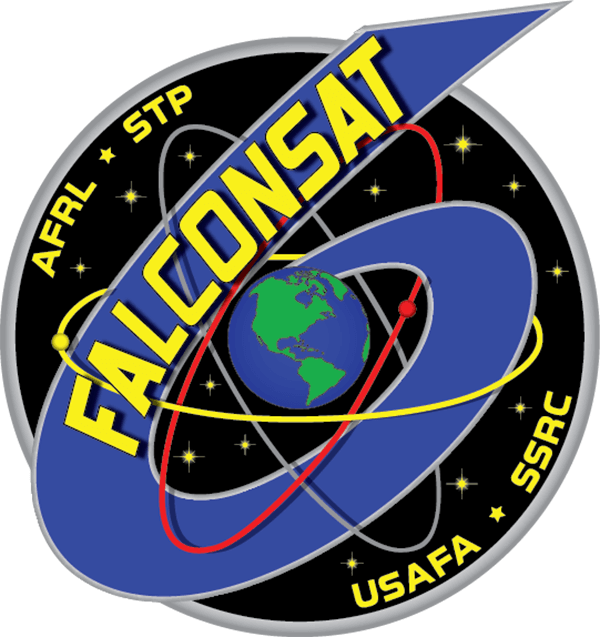
FalconSAT-6 launched on December 3, 2018, aboard a Falcon-9 rocket along with sixty-three other small satellites on the SSO-A mission. The spacecraft design was nearly identical to FalconSAT-5, with a few changes based on the lessons learned on that mission. Battery capacity doubled in comparison to FalconSAT-5, with six strings of 22 nickel-cadmium (Ni-Cd) cells. Additionally, the electrical power system included a string control circuit that was able to open-circuit individual battery strings. The exterior of the spacecraft was covered in silver Teflon tape to cold-bias the spacecraft and prevent overheating in the case of a period of full sun.
FalconSAT-6 hosts six experiments. The primary payload is the Space Plasma Characterization Source – Mk II (SPCS-2), a Hall-effect thruster and plasma probe. The satellite also hosts a broadband antenna, HIPE, which transmits in harmonics between 100 – 1000 MHz, enabling characterization of ionospheric disturbances on RF signals. The Module 5 experiment characterizes the performance of inverted metamorphic multi-junction cells in the combined effects environment of space. The Flexible Circuit Experiment evaluates the resistance of varying-width carbon nanotube resistive elements for use in orbit. The Contamination Measurement Experiment (CME) allows scientists to evaluate contamination caused by on-orbit operations, thruster firings, and launch vehicle integration activities. The STUB payload is a retroreflector that enables precision ranging of FalconSAT-6.
FalconSAT-6 exceeded all primary payload experiment objectives as of February 2023. This included the execution of over 2,000 successful payload events. Additionally, FalconSAT-6 participated in several Sprint Advanced Concept Training exercises sponsored by Joint Task Force Space Defense from 2019 to the present day.
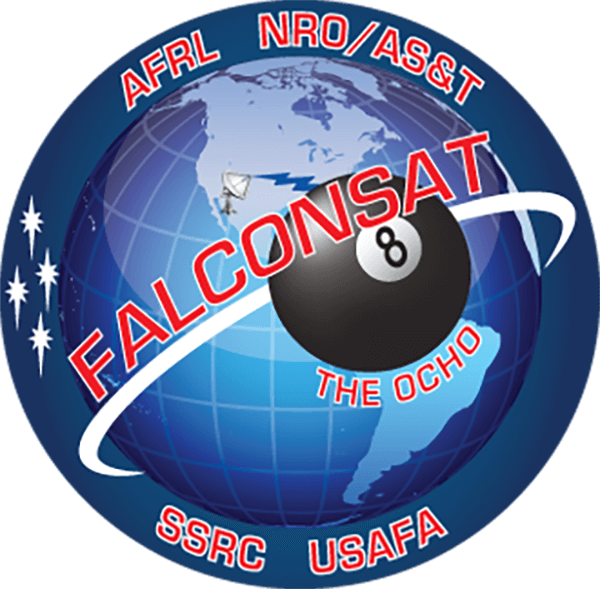
FalconSAT-8 launched on May 17, 2020, as a hosted experiment with the X-37B Orbital Test Vehicle (OTV) as part of the USSF-7 mission aboard an Atlas-V rocket. The satellite remained attached to the OTV’s service module until it was deployed in October 2021. FalconSAT-8 hosts five experiments. The Magnetogradient Electrostatic Plasma thruster (MEP) is a novel electromagnetic propulsion experiment utilizing permanent magnets to accelerate ions. The Metamaterials Antenna (MMA) is a low size, weight, and power antenna with phased-array-like performance. The Carbon Nanotube Experiment (CANOE) consists of several RF cables carbon nanotube outer conductors to evaluate their performance in the combined effects environment of space. The Attitude Control and Energy Storage (ACES) experiment evaluates two commercially available reaction wheels modified into a flywheel for energy storage and discharge. SkyPad, built by graduate students at the Air Force Institute of Technology, is a set of commercially available cameras and graphic processing units integrated as a star tracker. As of April 2023, FalconSAT-8 has executed over 400 successful payload events.
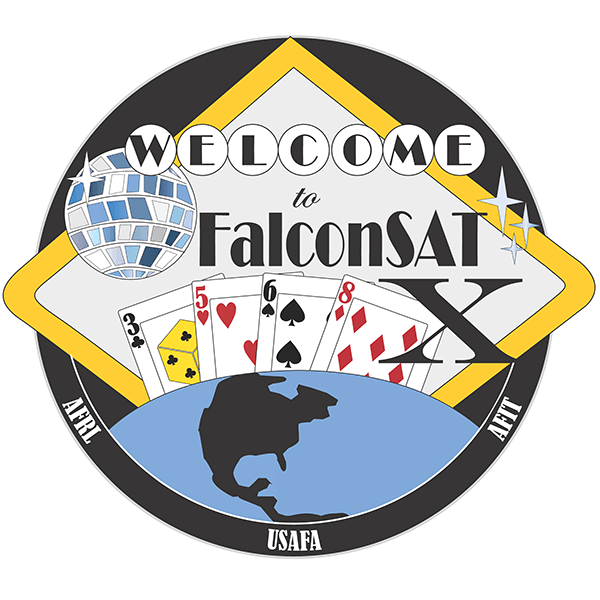
FalconSAT-X is the latest FalconSAT spacecraft built at the SSRC. It is slated for launch in the fall of 2023.
CONTACT US
Lt Col Daniel Showalter
(719) 333-3315
daniel.showalter@afacademy.af.edu